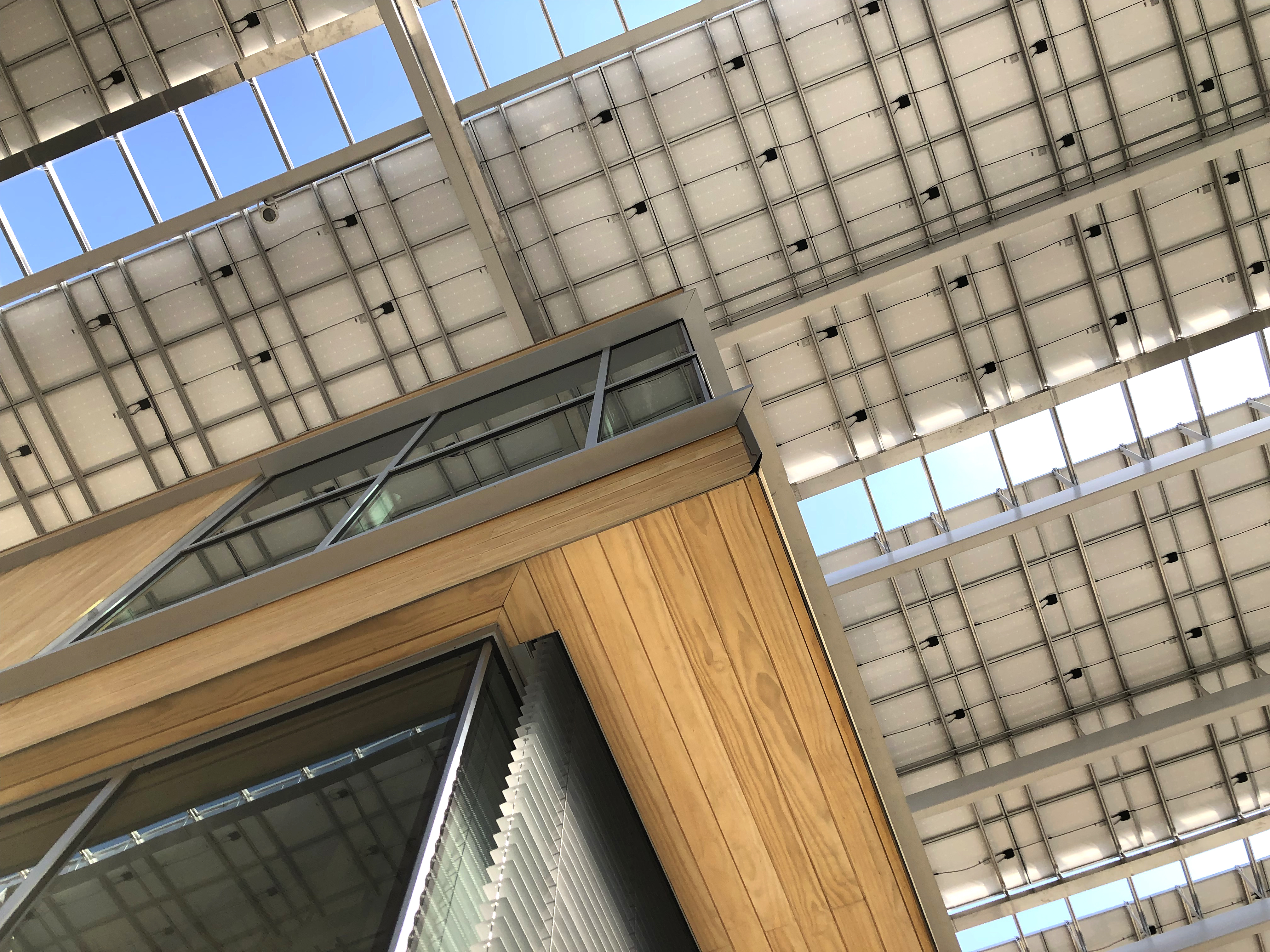Petal: Energy
Imperative 06: Net Positive Energy
Photovoltaic (PV) Canopy
To meet Living Building Challenge standards, The Kendeda Building must generate at least 105% of its annual electricity needs without on-site combustion.
The key to net positive energy is efficiency. Therefore, the design prioritized passive strategies like daylighting to reduce lighting loads, followed by efficient systems to lower energy demand—enabling a smaller solar array to meet the net positive goal.
A 330 kW solar canopy with 917 panels produces approximately 400,000 kWh annually, generating 175–225% of the building’s yearly electricity needs. This powers all systems, including lighting, HVAC, water, and plug loads. A 111 kWh lithium-ion battery provides emergency backup.
When solar output is low, the building draws from the grid. Surplus electricity benefits nearby buildings, reducing overall campus demand for utility power.
The PV canopy is also a key design feature that gets The Kendeda Building to net positive water.

